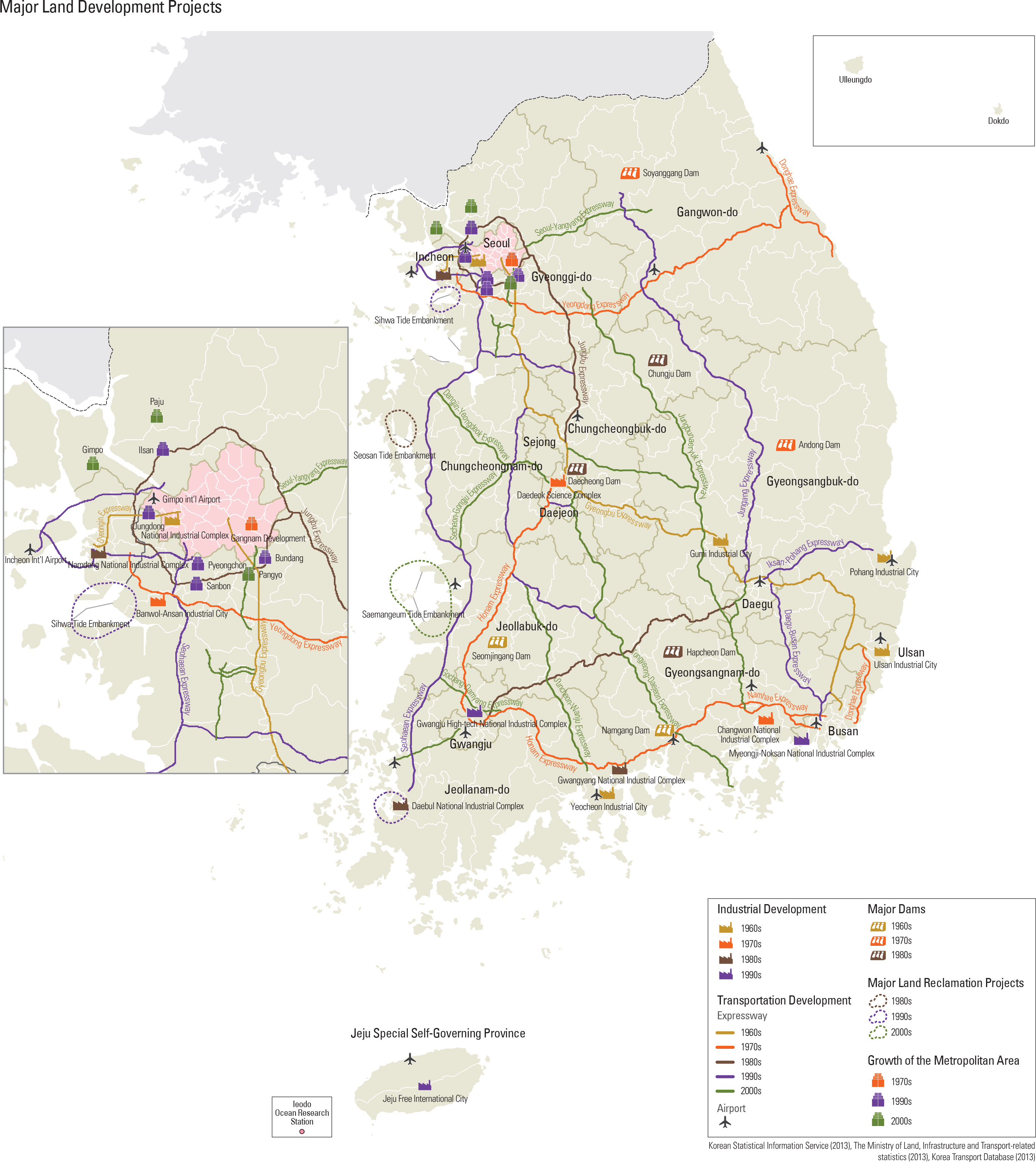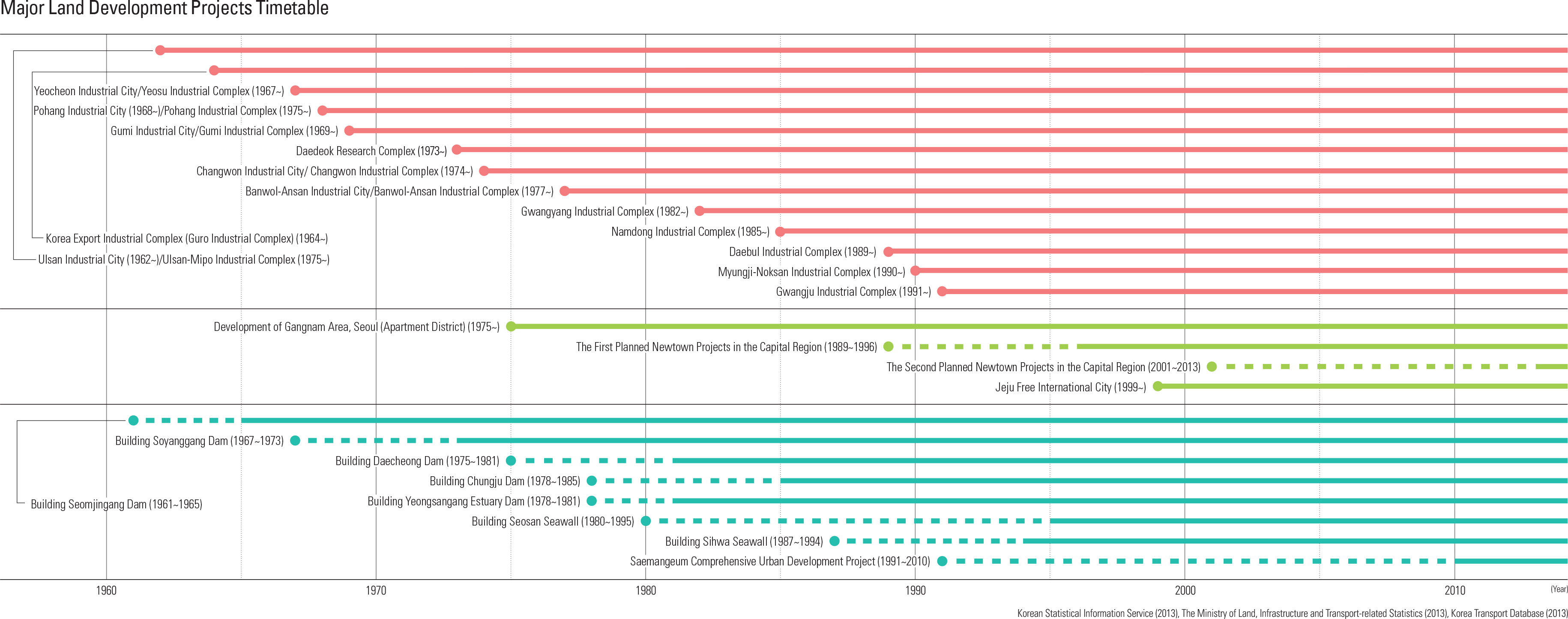Since the 1960s, the South Korean government has fostered economic growth through export by building both industrial complexes and new cities. Beginning with the Ulsan Industrial Complex, which was completed in 1962, and the Korea Export Industrial Complex (Guro Industrial Complex) in 1964, many industrial complexes and their adjacent cities emerged in and around Yeocheon, Pohang, Gumi, Incheon, Changwon, Banwol (Ansan), and elsewhere from the late 1960s through the 1970s.
As economic development gained momentum in the 1960s, the transportation infrastructures were rapidly built to support the transformation. The most notable project was the 428 km Gyeongbu Expressway which connects Seoul with Busan. Construction began in 1968, and the expressway opened for service in 1970. It serves as the main corridor through the country. Construction of the Gyeongbu High Speed Railway between Seoul and Busan began in 1992, and it was completed in 2004, which enabled commuters to travel from point to point anywhere in the country within one day-an advancement hailed as “a half-day life zone.ˮ The importance of water as a resource was recognized in the 1960s; thus, the multi-purpose Seomjingang Dam was built in 1965 across the Seomjin River. More multi-purpose dams were built straight through the 1970s to the 1980s; the Soyanggang Dam, Daecheong Dam, and Chungju Dam are notable examples. All possess hydroelectric power generation capabilities. In 1978, Korea’s first nuclear power plant, the Gori Nuclear Power Plant No. 1, was built and began operating near Busan. Subsequently, more nuclear plants were built in Wolseong, Uljin, and Yeonggwang.

